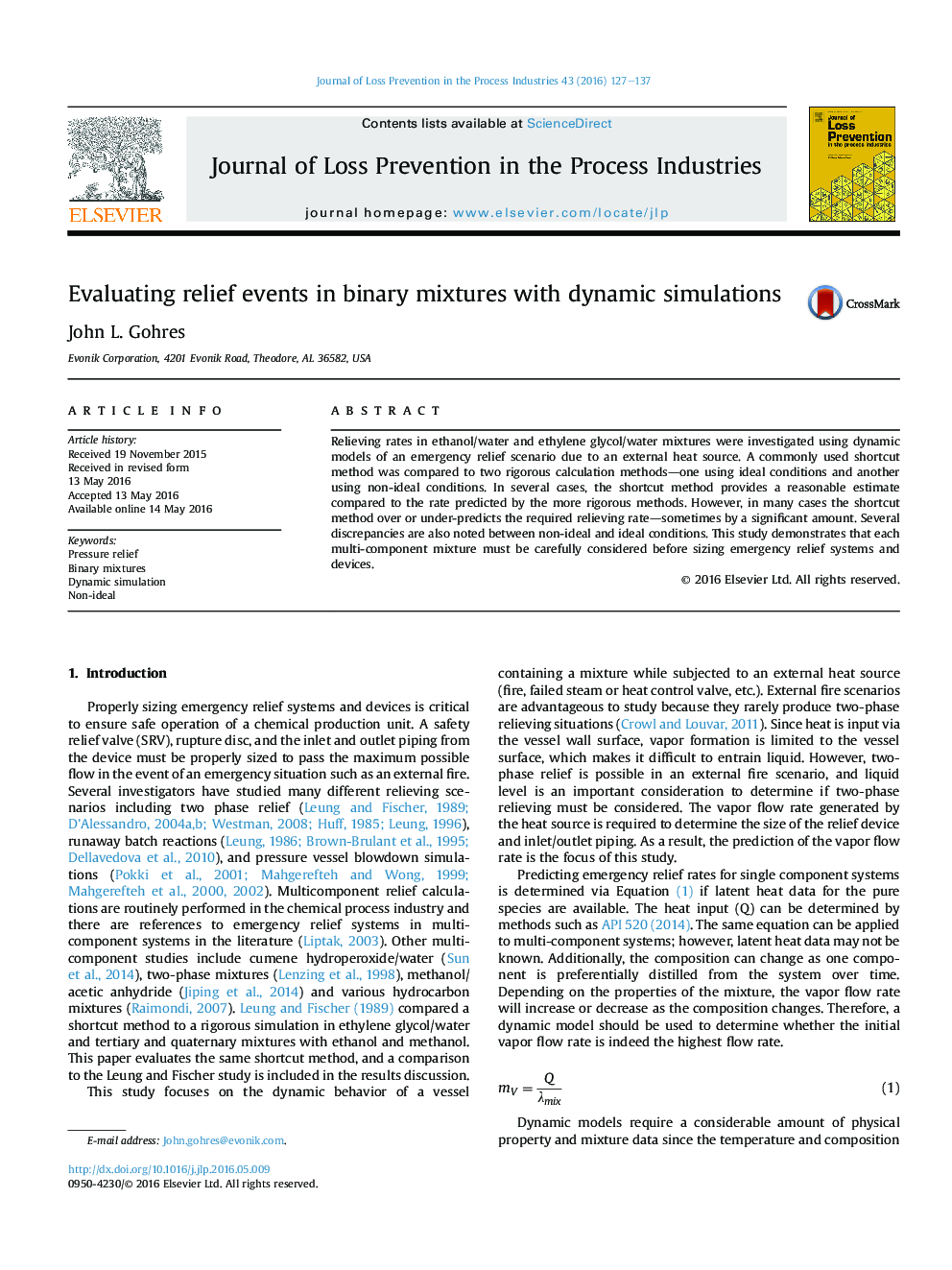| Article ID | Journal | Published Year | Pages | File Type |
|---|---|---|---|---|
| 585918 | Journal of Loss Prevention in the Process Industries | 2016 | 11 Pages |
•Explores relieving events in two different binary mixtures with dynamic simulation.•Evaluates a shortcut method to predict relieving rates in mixtures.•Compares the shortcut method to ideal and non-ideal dynamic simulations.•Models generally predict the maximum relieving rate within 5%, but it can differ up to 15% in some cases.•Initial concentration and the mixture components have the largest impact relieving behavior.
Relieving rates in ethanol/water and ethylene glycol/water mixtures were investigated using dynamic models of an emergency relief scenario due to an external heat source. A commonly used shortcut method was compared to two rigorous calculation methods—one using ideal conditions and another using non-ideal conditions. In several cases, the shortcut method provides a reasonable estimate compared to the rate predicted by the more rigorous methods. However, in many cases the shortcut method over or under-predicts the required relieving rate—sometimes by a significant amount. Several discrepancies are also noted between non-ideal and ideal conditions. This study demonstrates that each multi-component mixture must be carefully considered before sizing emergency relief systems and devices.
